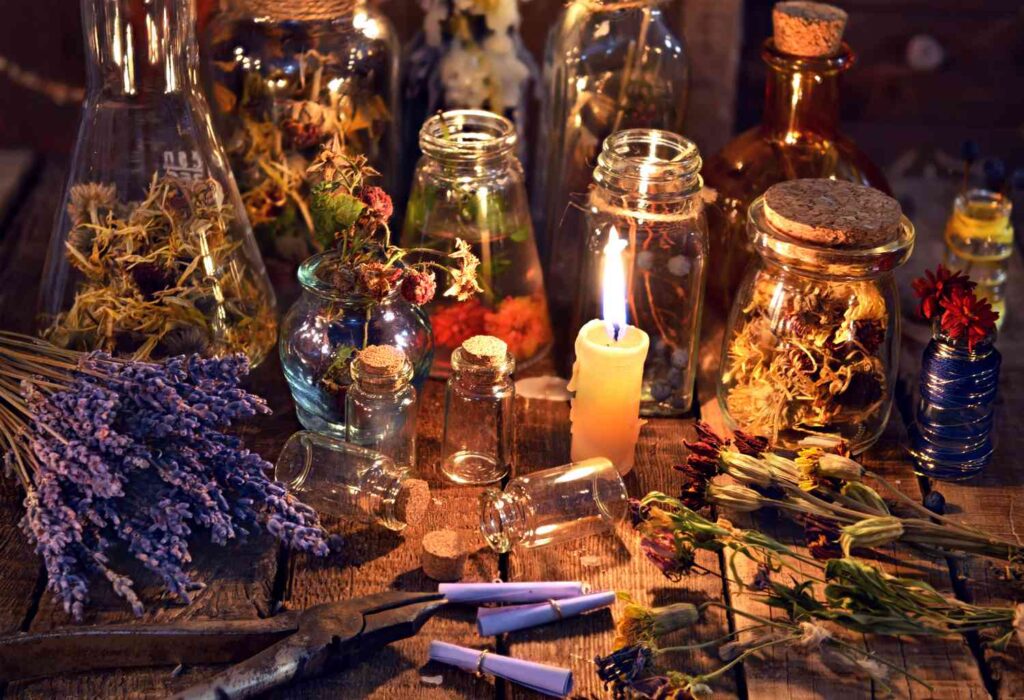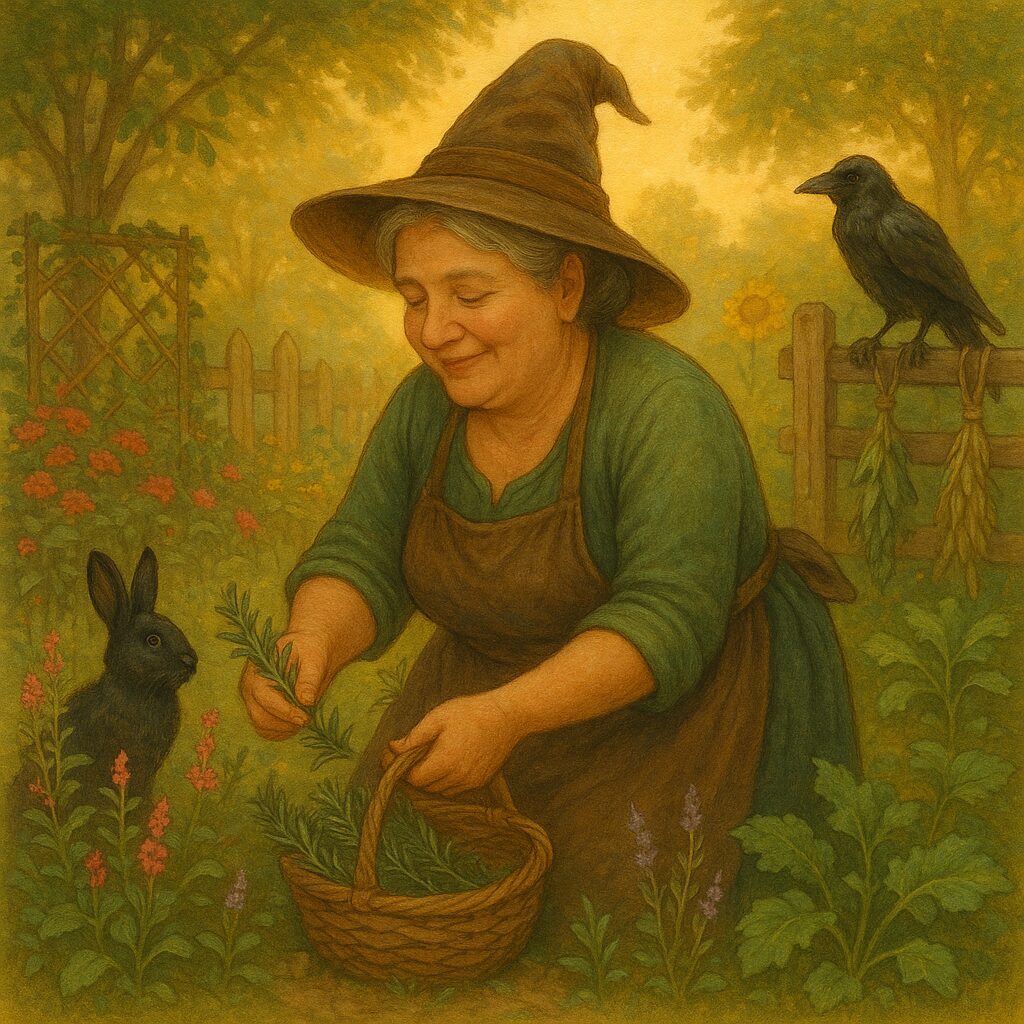The Living Green: Herbs in the Art of Witchcraft

From the moment the first witch gathered leaves beneath the moon, herbs have been the breathing heart of the Craft. Where candles are the alchemy of flame, herbs are the alchemy of life itself—sunlight made fragrant, memory turned green. Each stem, each root, each seed carries within it the subtle intelligence of the Earth: a living script written in scent and color, teaching that magic is not conjured apart from nature, but in collaboration with it.
To work with herbs is to speak the oldest language of the witch. In ancient temples, they were burned as offerings to unseen gods; in cottage hearths, they were steeped into healing teas and protective washes. The cunning folk and herbalists of old blurred the borders between healer, midwife, and mystic. Their craft was one of intuition guided by long observation—the feel of a leaf, the hum of its spirit, the weather of its season. In every culture, the witch’s green allies formed the bridge between the tangible and the divine.
In magical philosophy, herbs embody both symbol and substance. Each bears a correspondence shaped by its essence: basil for protection and prosperity, rosemary for memory and cleansing, mugwort for sight beyond sight. These are not superstitions but relationships—expressions of resonance between plant, planet, and purpose. To the witch, a bundle of sage or sprig of rue is not merely matter, but a living sigil of intention.

When fire refines wax, it mirrors transformation; when hands grind leaves into powder, the same principle unfolds. Burned as incense, herbs belong to Air and Fire, rising as prayer and will. Steeped into potion, they serve Water, carrying emotion and flow. Buried or sprinkled, they call upon Earth’s stability; worn as charm or scattered in circle, they awaken Spirit through touch. Every herb is a microcosm, a fourfold vessel uniting the elements within its living form.
To harvest or craft with herbs is an act of devotion. The witch who grows their own learns the patient rhythm of green time—watering, tending, pruning with care. Even dried and purchased herbs may be blessed and reawakened through breath, smoke, or moonlight. Quality matters: a herb that still smells of the sun will answer more readily than one long dead. Yet the magic is not lost in imperfection; intention revives what care neglected. The act of grinding, blending, or steeping becomes meditation itself—a ritual of focus that teaches the same lesson as fire: transformation through attention.
As with all workings, ethics and reciprocity matter. Herbs are not inert resources; they are living spirits with whom the witch forms covenant. Take only what is needed, leave offerings, and learn the stories of the lands they come from. The green current strengthens those who walk gently upon it. To gather without gratitude is to sever the very root of power.

Through herbs, the witch enters the ecology of enchantment. The rose opens the heart; yarrow seals protection; valerian calms the restless mind. Each leaf offers a fragment of the world’s wisdom, each root a lesson in endurance. When arranged upon the altar, they become more than ingredients—they are teachers, companions, and keepers of memory.
Magic begins, then, not always in the fire’s spark, but in the quiet whisper of leaves. The candle burns fast and bright; the herb grows slow and wise. Together they complete the circle of creation—flame and green, will and patience, spirit and body entwined.
To know the herb is to know the world that made it. To work with the green is to remember that every spell is a seed, and every seed, a promise returned to the earth.
Herbs & Flowers in Witchcraft — Practical Encyclopedia
Search or jump by letter. Each entry includes uses, brief lore, correspondences (element 🜁/🜂/🜄/🜃 & planet), optional deity ties, how to use in the craft, cautions, a fun fact/nickname or culinary pairing (edibles only), and a grower’s note.
Educational, not medical advice. Avoid ingestion during pregnancy/nursing or when on medications unless a qualified professional approves.

